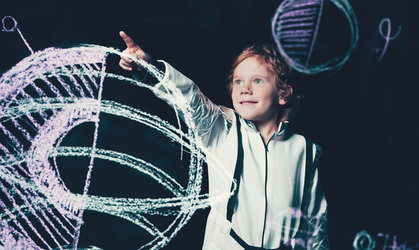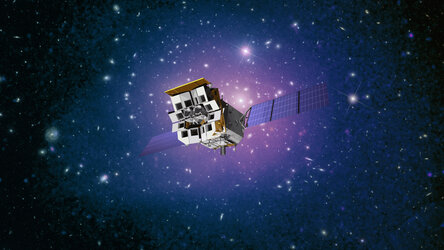Meet the teams: PACMAN
The PACMAN team is composed of two PhD students and four Master students from the University of Padova in Italy. They want to develop and validate an integrated system for proximity navigation and soft docking based on magnetic interactions.
Position and Attitude Control with MAgnetic Navigation
| University | University of Padova, Italy |
| Endorsing professor |
Prof. Alessandro Francesconi University of Padova, Italy |
| ELGRA mentor | TBD |
| Team |
Matteo Duzzi Mattia Mazzucato Riccardo Casagrande Matteo Vitturi Fabrizio Vitellino Filippo Trevisi |

The PACMAN experiment is a technology demonstrator whose main goal is to develop and validate, in low-gravity conditions, an integrated system for proximity navigation and soft docking based on magnetic interactions, suitable for small-scale spacecraft. This will be accomplished by launching a miniature spacecraft towards a target that generates a static magnetic field. A set of actively-controlled magnetic coils onboard the spacecraft, assisted by dedicated localisation sensors, will be used to control its attitude and position relative to the target. External cameras will be used to monitor the experiment during the tests in low gravity.
The realisation of the PACMAN experiment will allow the team to study the behaviour of a miniature spacecraft subjected to controlled magnetic interactions in low gravity conditions, and to validate the theoretical/numerical models that describe such interactions. Data collected during the experimental testing will allow to assess the system’s concept feasibility and its limitations. Moreover, the test results will provide precious data that will be exploited to improve the proposed technology for future developments. The researched technology represents an innovative solution for proximity navigation manoeuvers for small-scale cooperative spacecraft. The purely magnetic attitude and position control, as well as its self-aligning capability, imply significant mass savings, as no fuel and thrusters are employed, making this concept very advantageous for miniature cooperative spacecraft.
The team's experiment report is available here.















 Germany
Germany
 Austria
Austria
 Belgium
Belgium
 Denmark
Denmark
 Spain
Spain
 Estonia
Estonia
 Finland
Finland
 France
France
 Greece
Greece
 Hungary
Hungary
 Ireland
Ireland
 Italy
Italy
 Luxembourg
Luxembourg
 Norway
Norway
 The Netherlands
The Netherlands
 Poland
Poland
 Portugal
Portugal
 Czechia
Czechia
 Romania
Romania
 United Kingdom
United Kingdom
 Slovenia
Slovenia
 Sweden
Sweden
 Switzerland
Switzerland
























